Stop Dropping Pins, The Story Behind The Cover
Why secret spots should remain that way.
Stab is very passionate about trying to change the culture of surfers who rolls up to attractive conditions and Gram a photo or drop a pin for pals before paddling out. So, we decided to show our distaste through the type of thematic photoshoot we so love. We teamed up with Vodafone and their $5 Roaming product, and headed to New Zealand. Now, these shoots aren’t easy things to curate, which is where Vodafone’s $5 Roaming came in handy. It’s usually $5 extra a day to use our Red Plan in NZ, but because $5 Roaming is free in NZ until Jan 31, 2017, we used our plan data to check weather and swell forecasts, book hire cars and accommodation, use Google Maps, and… check our bank account$. All using our normal phones as if we were at home. Which is kinda nuts, and removes one of the most painful inconveniences of surf travel. We wanted to create 3D illustrations in the sand, and NZ’s three metre tides meant we had a serious canvas to work with. The idea was to stage a cover shoot that illustrated the absurdity of sharing imagery or locations that will only make the surf more crowded. We partnered with local 3D sand illustrator Jamie Harkins, surfer Ethan Ewing and creative Miles Pitt.
***
Butterflies. They swarmed in the pit of his stomach, as he trudged up another dune. It felt like they’d been walking for days. So much anticipation and nervous energy as they neared the peak of the twentieth sandy mountain since sun up. Countless months of research had led to this moment. Devouring weather charts, scouring and scribbling over maps of the region, plotting potential formations of sand, rocks and reef. All done in tight-lipped secrecy. He and his friend had hiked it three times previous, arriving at a beach with no sign of ocean energy. But this time they felt hopeful. This time, surely the stars had aligned. As they came over the crest – think Cape St Francis in Bruce Brown’s Endless Summer – what greeted them was almost unfathomable. Mechanical. Perfect, in every way.
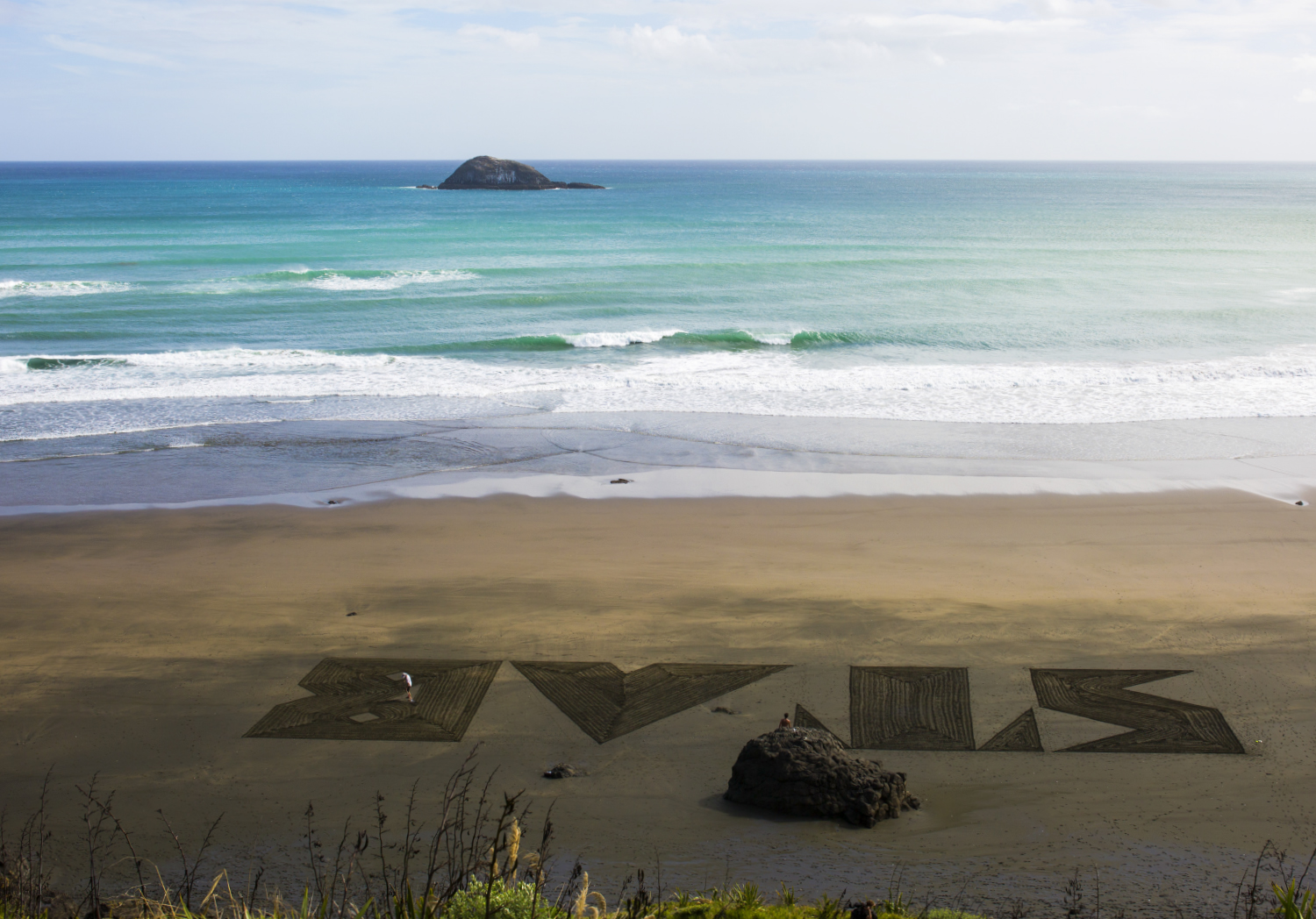
One of the wonderful things about conceptual cover shoots is to see an idea born on paper materialise – and more often than not, take its own form. Initially, we wanted an aerial shot of a secret spot with life-sized dropped pins on the beach. In the end, we chose a different option. Regardless, it was thrilling to see our logo carved into the sand.
Post-surf, they reflected on the session. They were rinsed with that surfed-out combination of tiredness and blissful satisfaction, as they sat and watched more perfect waves reel down the point, unridden. Was the discovery itself enough? Was this place enough? Could anything top this feeling, this experience? As they hammered the large white stake in the ground out on the tip of the point, and placed the giant red balloon atop, they felt safe in the knowledge they’d find their way back. And so too would hundreds, maybe thousands of other surfers. They’d print and post out maps to all their friends and followers as soon as they got home, with detailed directions to the spot, and photographic evidence, of course, as proof of its worth. They’d include details of the date and time they’d surfed it, and the weather, swell and wind elements that had come together on the day, so that everyone might know when best to time their visit. Soon enough they’d be heralded as pioneers. The Burke and Wills of surf! Not to mention the number of thumbs-ups, love hearts and smiley faces they’d receive. They’d go down in history. Maybe it’d end up the most liked spot ever! Maybe a resort might get built there one day. Their heads swam with fairy floss dreams of fame. Sure, they’d never surf it like this again – quiet, peaceful, just two buddies in the water, enjoying nature in its most pure and perfect form. But the gratification! The world had taught them it was what mattered most.
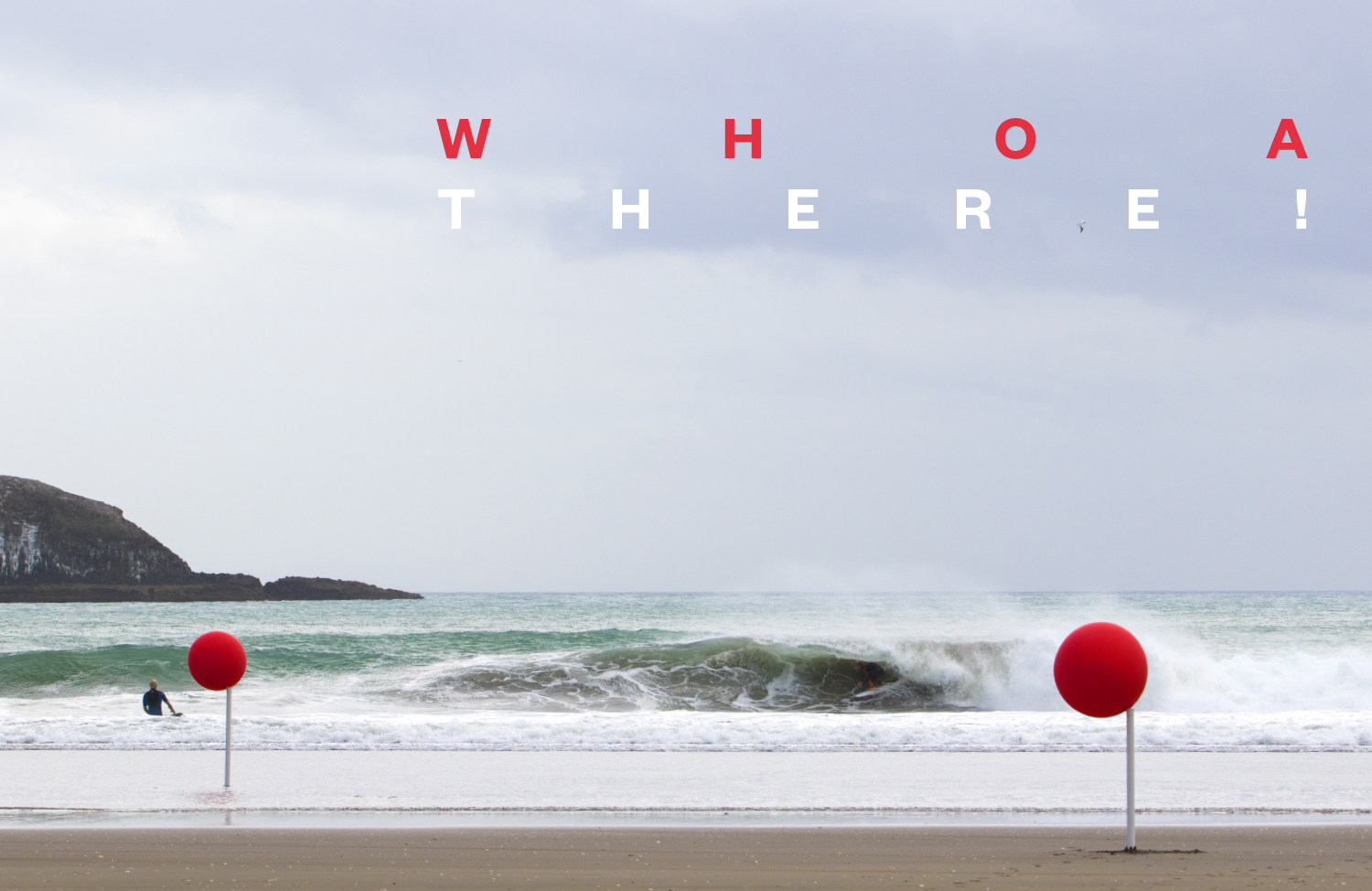
Heard of Ethan Ewing? He’s a dazzling regular-footer from North Stradbroke Island, hovering on the edge of adolescence and enjoying the deep breath before an inevitable explosion. But even at his age, E already knows the value of selfishness when it comes to the preservation of secret spots.
Flabbergasted by this series of events? Who in their right mind would do this? “Keep it to yourselves!”, you’re likely screaming at our protagonists. Strangely, the aforementioned scenario has become the unequivocal norm in our crazy, mixed-up world, ever encouraged and made increasingly easy by advances in digital technology (particularly in the realm of cartography), and the ease of sharing this information at the click of a button. Because we can, we do; no questions asked. Stoned on technology, our virtual lives are ruled by social media, and the gratification habit that comes with it. When described in physical terms, the scenario above sounds like madness – the antithesis of our code as surfers – yet it is precisely what you do every time you geo-tag a spot on social media. So why do we do it? Susan Sontag once mused in her seminal book, On Photography, that “everything exists to become a photograph.” Fair to say this has never been truer than in our current society. Your newborn child? Quick, take a photo of that little guy as soon as he’s out in the world, lest you forget this special moment. Checking out the Eiffel Tower? You might never recall its shape, size or scale if you don’t take a picture immediately! And in surfing terms, you’ve trekked all the way to deepest, darkest Africa, to surf a wave that’s been described as touching heaven. Having gone all that way, would the memories in your mind alone suffice? Could you resist the urge to try and capture the moment; to take home a piece of the place, a tangible reminder? Even exploration purists like Kepa Acero (check his Youtube channel) carry a GoPro on their deepest adventures, documenting everything with outstretched arm – from the waves, to their emotions and reactions along the way. If it wasn’t documented, would words alone do the experience justice? And if it’s not on social media, did it even happen?
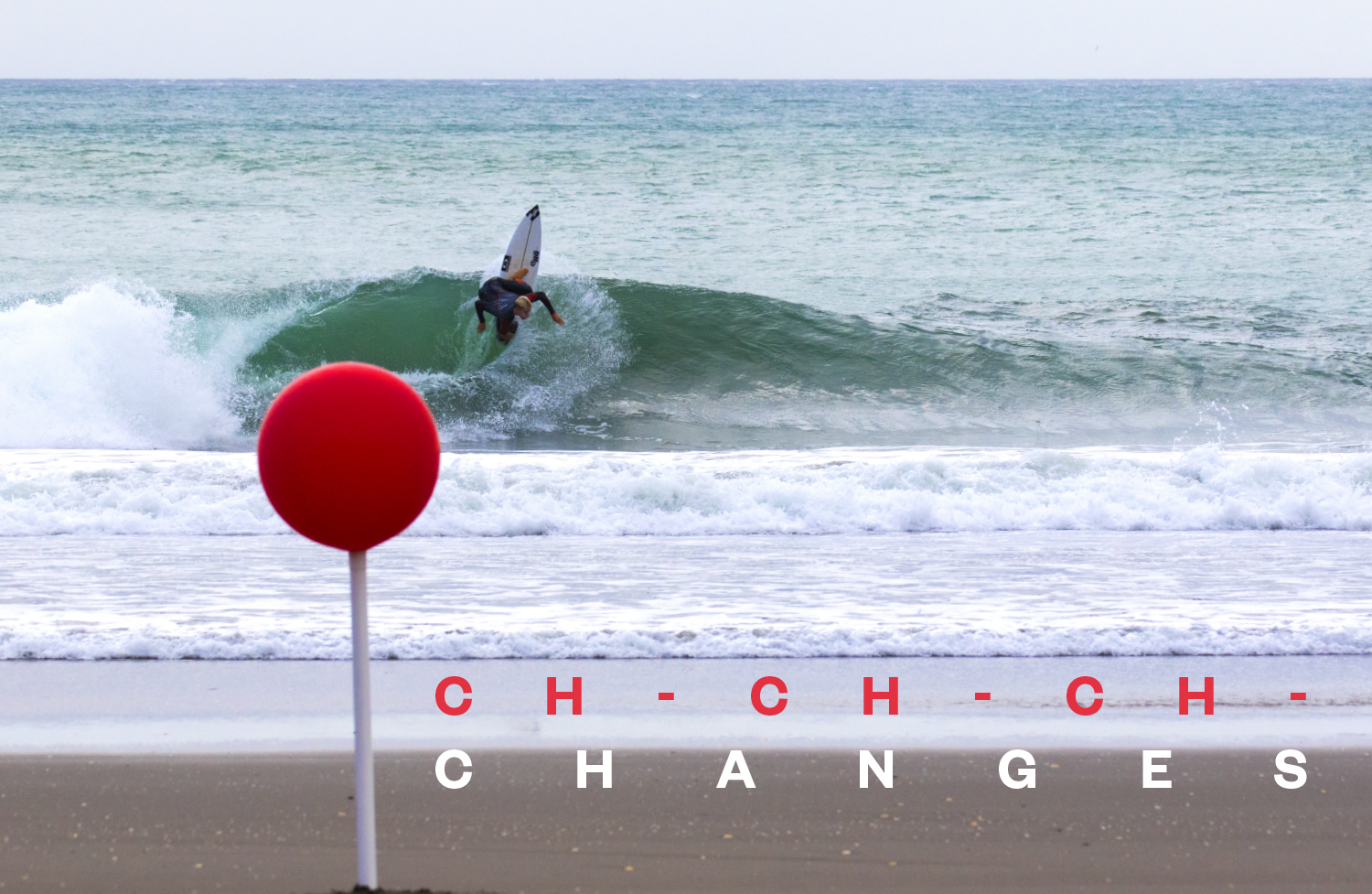
This was Ethan’s first proper magazine trip – and cover. He sure didn’t disappoint. In most surfers his age there’s little more than the promise of the coming man, but E has a rounded game and pace like few of his peers. Dine on the precision and spacial awareness here!
Before the iPhone blitz, it was all word of mouth. Carpark chatter. Boozy exaggerations. Before the advent of the Internet and social media, all we had was the story. Chinese whispers that circulated slowly via campfire conversations, and eventually phone calls and emails. The infamous Cyclops, for example (and that whole bottom coast of WA), might never have been discovered or explored as thoroughly as it has so far, were it not for a curious fisherman once mentioning to a surfer that he’d seen some crazy waves breaking consistently like tunnels at a particular patch of reef. Intel was carefully passed between friends and acquaintances. Sometimes magazines were even let in on the secrets, which brings us to a double standard to which we’re not oblivious.

Here, a fun, if unremarkable wave, surfed remarkably by Ethan and greatly enhanced by the presence of our Google-esque pins (visually, not ideologically!).
The irony of you reading this in a magazine is not lost on us. We were once – and sometimes still are – the chief pin-droppers. Publishing images of ‘the last real secret spot’ for the spoils of magazine sales, bolstering our reputation as trail blazers. We’ve been doing it for years. For us, the race to that next exclusive is never ending. It’s supply and demand. We’re simply giving you what you want. In our defence, we don’t take our position lightly. Never have. We’re not printing guides to these new spots; you’ll find no illustrated maps within these pages. Though images of the waves are there for you to dine on, our motivations are to spark the imagination. To encourage the dreamers to dream. To inspire the taste for adventure. Keep you hungry for the search, remind you that the fruits are still out there if you work for them, if you want them bad enough. They’re special. But make no mistake, we believe you should have to work for them. Though it’s too often the polar opposite of our current way of life, the rewards of something earned through hard work and sacrifice are many. And it’s on this subject particularly that bodyboarders are the experts.
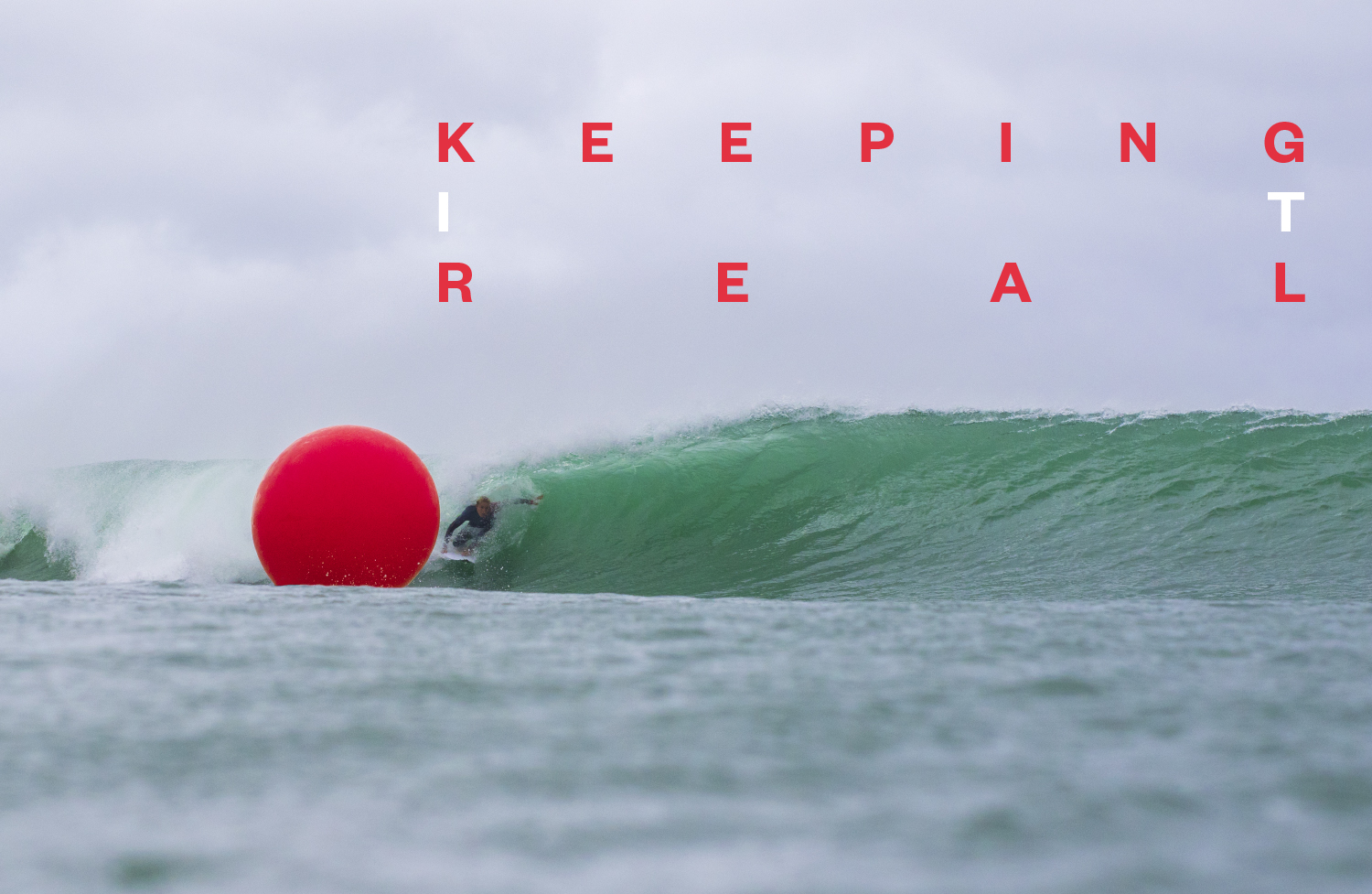
The logistics of this cover shoot were, uh… challenging. Creative Director Miles Pitt insisted we shoot some dropped pins on the water – since you can do that on Google Earth too…
Having been on a boog for twenty-something years or more, I’m have significant bias on this subject, but to me the facts are irrefutable. In Australia especially, its typically been bodyboarders who have searched out new regions, hunting down crazy new slabs in the middle of nowhere, and also keeping the details under wraps. Generally speaking, those motivations differ from your average pro surfer. Explorations are rarely undertaken for the money or the fame, simply because there is no money and even the fame is limited. In this sense it keeps things pure. Take a guy like Mickey Smith, who has been at the forefront of discovering most all the Irish slabs you’ve ever laid eyes on. A true adventurer, it’s never been about the money for Mick. Nor is he likely to go dropping pins on any of his gems for the benefit of a couple of likes. If you got chatting with him in Kenny’s over a pint of Guinness however, it could be a different story. It’s all about sharing the experience in real time. Then, take The Right, for example – that unimaginable freak of nature in Western Australia. Co-discoverer Brad Hughes tells me it was a combination of hard work and luck that saw them find this slice of big wave heaven. “You’ve gotta go (searching) on days when the conditions are good; big swell and clean winds,” says Brad. “I remember so many days spent driving around on skis down there, just searching. Some days you don’t even get to surf, even though the conditions are pumping.” And though they documented those first sessions and submitted photos to magazines, the details of its whereabouts were kept under lock and key for as long as possible by the small crew.
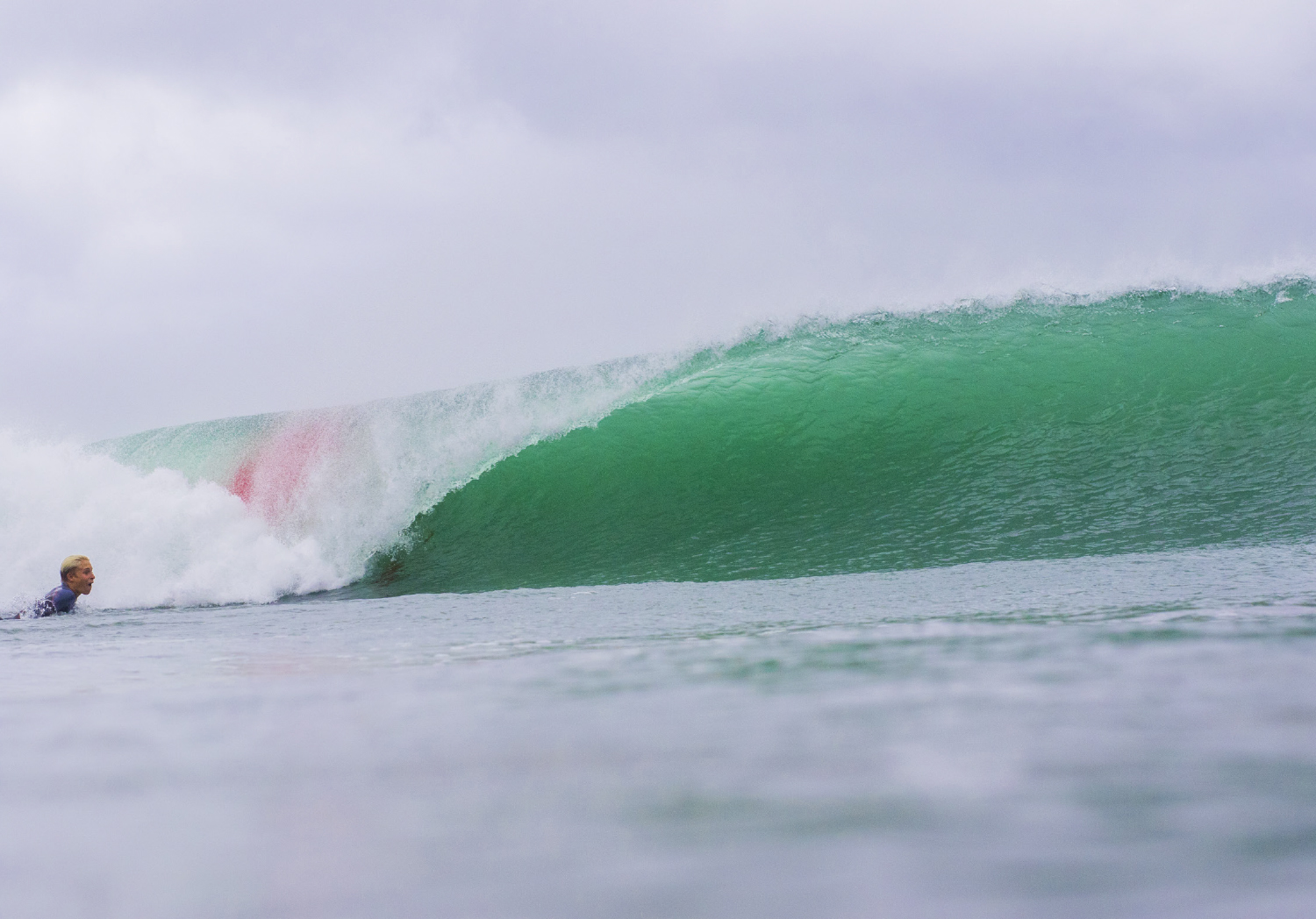
… But the ocean answered in one swift strike: took out the balloons on the very first set. Not so subtle message?
“I think we surfed it maybe three times with no one out,” Brad continues. “We would load the skis in the water, then hide our cars in the bushes. But I guess it was only a matter of time before someone found out. A few guys had got wind that it was somewhere down there, and I think it was maybe a fisherman that told Ordy (WA photographer Russell Ord) he’d seen us heading out in a particular direction on the skis. Then that was it. I just wish it had been a bit more out of the way and harder to find.” WA bodyboarder Chris White is another who has made his fair share of discoveries along the west coast over the years (also part of the initial crew to discover The Right), and recently dived back into it with fellow slab-chasing surfers Kerby Brown, Brad Norris and Phil Reid. He admits Google Maps technology plays a huge part in much of their early research, but he’s blown away that people continue to drop pins on spots via social media. “It’s pretty crazy, I think… I won’t even post photos with landmarks,” Chris reflects. Though he and his cohorts are all active on social media, he’s adamant they’re always tactical about what’s posted. “A lot of the time people assume we’re in one region, when we’re actually in a different place altogether.” Would he still be doing it without a camera, just for the experience of discovering these waves and seeing his friends ride them? He’s quick to answer: “One hundred percent.”

Regardless of where you stand, next time you’re thinking about dropping a pin on a spot, ask yourself this simple question; would you be comfortable hammering in a large white stake on the beach and mounting a giant red balloon on top, to guide everyone straight up a stairway to heaven?
Photographer Jem Cresswell has always been an explorational gent. Growing up in South Australia, the whole coast west of Adelaide captured his imagination from an early age, and he spent much of his late teens and early 20’s finding and shooting various waves, from Victor Harbour and Yorke Peninsula initially, to as far west as Cactus and beyond. It’s clear he has mixed emotions about the part he’s played in some of his home state’s spots becoming well known. He speaks with an air of responsibility, reflecting that had he not shot and submitted images of those spots to magazines over the years, they might still be going unridden now. I remind him it’s an isolated (not to mention sharky) part of the world, where you’re often stoked at the prospect of other people to share an eerily empty lineup with. Regardless, he’s very much anti-dropping pins and leading others straight to spots. He’s seen what happens first hand when spots blow out, and holds a deep appreciation for doing the hard work to score new waves, keeping it old school and secretive when it comes to details. “Social media’s always the peak of your life, and everyone’s out for themselves in that sense,” Jem says. “Like, I’m scoring, you’re not. With any newly-discovered spots though, someone’s done the groundwork, every time. And it’s pretty admirable, guys that are still out there, going back to the same spots, but keeping them quiet.” Having travelled mostly with bodyboarders over the years, Jem’s also strongly for it being as much about the journey as it is about the end result of getting waves. Countless times he’s seen crews of pro surfers “turn up, blow up, leave” and though he admits the luxury of that can be nice and has its place, he’s all about going through the full experience.

The one that almost made it. This aerial shot finished a close second in the deciding of this issue’s cover. The original idea was to have dropped pins on the cover photo – but after we saw the amazing staircase piece (above) that Kiwi sand artist Jamie Harkins created, the choice was obvious.
With all those years of exploration, he’s picked up plenty of tricks along the way and thinks that even without specific geo-tagging, guys are still giving too much away when they’re posting images online. “If someone’s put something on the net, give me two days and I reckon I could find it,” he quips with a wry smile. And he’s certainly not the only one. While I was penning this piece, our publisher was sampling some heaven of his own thanks to Google Earth, at the infamous Skeleton Bay in Namibia – a wave that might still be going unridden (or at least undocumented) were it not for the Google Earth Challenge run by Surfing Magazine back in 2012. A double-edged sword couldn’t be any sharper on both sides. It’s undeniable that we’re blessed to have discovered such a sublime stretch of sand, but the sad flip side is that on this most recent swell there were multiple drones buzzing around above the lineup, and GoPros in countless surfers’ mouths. Everything exists to become a photograph, after all. Maybe you’re cool with that, maybe you’re not. Regardless of where you stand, next time you’re thinking about dropping a pin on a spot, ask yourself this simple question; would you be comfortable hammering in a large white stake on the beach and mounting a giant red balloon on top, to guide everyone straight up a stairway to heaven? No? Then don’t do it in cyberspace.













Comments
Comments are a Stab Premium feature. Gotta join to talk shop.
Already a member? Sign In
Want to join? Sign Up